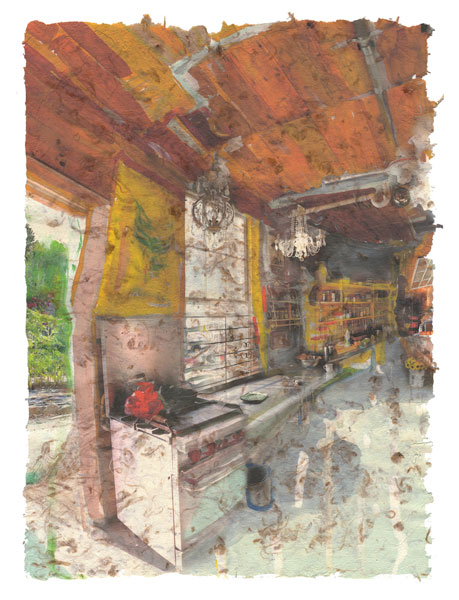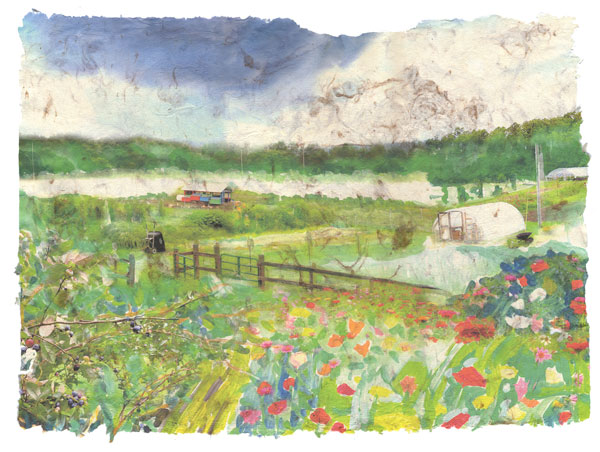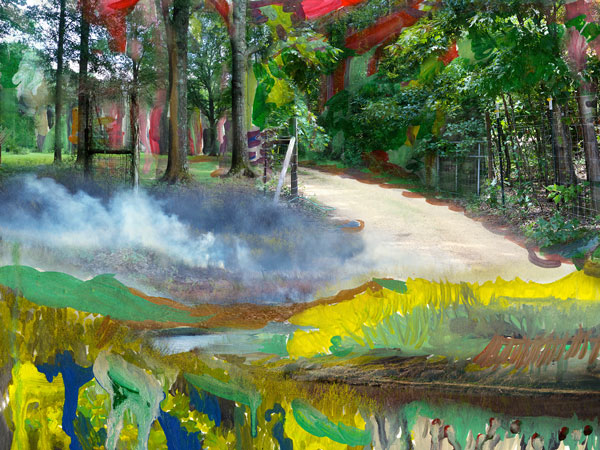My work is about grasping fragments of time-- both in the landscape and in my own memory. When I think about a place in detail I am aware that my memory is made from more than a single moment. Furthermore, I am aware that no place is still. The landscape is constantly moving and ever-shifting. More than ever, we share an awareness that our landscapes are changing rapidly, through suburban sprawl, industrial agriculture, and dramatic weather events caused by climate change. My work expresses our contemporary environmental anxiety- we are trying to hold onto remembered landscapes even as they vanish. In these works, I blend transitional points of view, illustrating how memories are composites of many experiences with no single perspective. I use gestural and dripping paint marks to represent time passing, and the obscurity of moments past. By blending many forms of representation in a digital print, or digital video, I juxtapose media originating in multiple eras, held together in a single work.
My current project, Fleeting Gardens, is comprised of digital prints on handmade cotton paper that I grew at my farm, Wildland Gardens. In addition to the prints, the project features two projected video animations. For this work, I photographed and painted small Arkansas farms, rural interiors, and objects. I use digital tools to blend and juxtapose the painting and photography to create the prints and video animations.
More on Cotton
I grow two varieties of cotton. Nankeen which is a beautiful soft brown cotton and a standard short lint white cotton. They are grown without chemical
additives along side the bright zinnia flowers that frequently make appearances in the prints. All the cotton for the Fleeting Gardenexhibition
was grown in the summer of 2014. After being picked in late fall, I hand pluck the seeds from the bolls. The cotton is cut and boiled with baking soda
before being blended into a pulp. The pulp is strengthened by adding a small amount of recycled cotton paper and sizing. The pulp is thinned with water
in a huge sink and I make the paper using a hand-made mold (deckle). Each sheet of paper is intentionally unique.
Cotton is one of the most important crops in the history of Arkansas. It directly relates to and represents slavery, plantations, and Arkansas's civil war history. It also represents industrial agriculture. Over the past 100 years it has been grown in increasingly large plots of land, it is bombarded with chemical additives and has been engineered to meet the requirements of mechanical harvesting. Cotton has a heavy history. By growing it on a small scale, to make art, I am beginning the process of creating a new (and old, pre-industrial) relationship to this plant.
